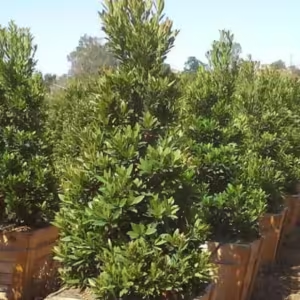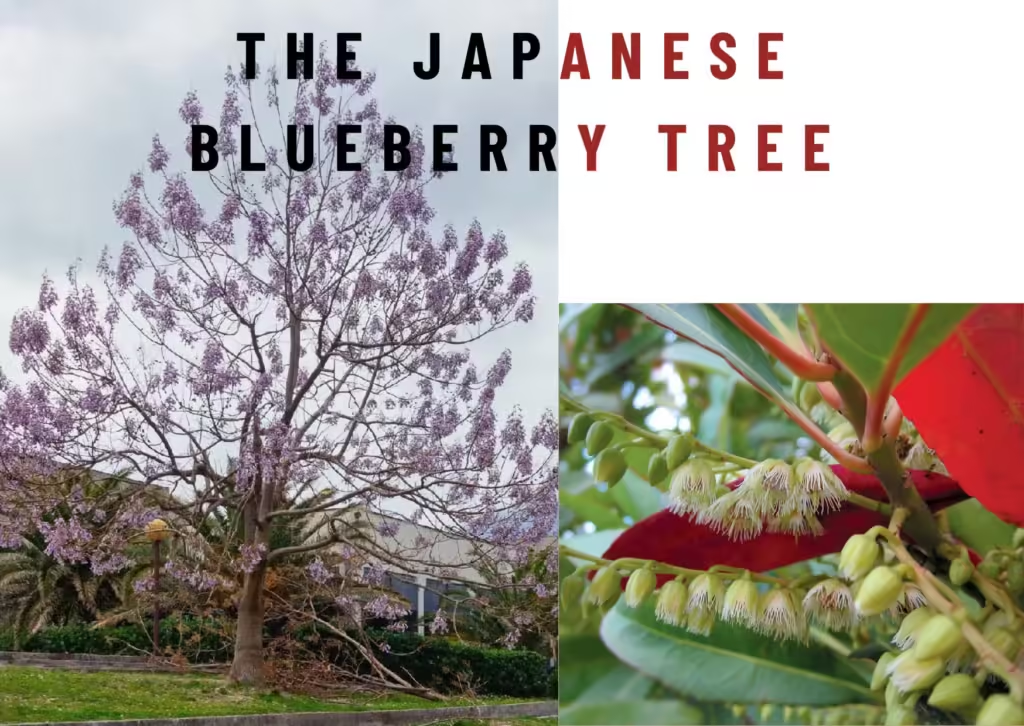Scientifically known as Elaeocarpus decipiens, the Japanese Blueberry Tree is a stunning evergreen prized for its vibrant leaves and ornamental value. This tree is renowned for adding a touch of elegance to gardens and is often used in landscaping and urban spaces. In this post, we’ll explore the essential aspects of the Japanese Blueberry Tree, from its appearance and growing conditions to its benefits and care.
What is the Japanese Blueberry Tree?

Growing Conditions
The Japanese Blueberry Tree thrives best in USDA hardiness zones 8 through 11, making it an excellent choice for warmer regions. It can tolerate a range of light conditions from full sun to partial shade; however, it prefers well-draining, slightly acidic soil. Consistent moisture is essential for its growth, and regular watering is particularly important for young trees to develop strong root systems. In contrast, mature trees exhibit greater drought resistance, allowing them to withstand periods of low rainfall once established.
It is advisable to fertilize with a balanced formula in both spring and fall to support rapid growth and maintain healthy foliage. Additionally, providing compost around the base of the tree can help retain soil moisture and regulate temperature. With the right care, the Japanese Blueberry Tree can flourish, bringing beauty and elegance to any landscape.
Cultivation
Choose a location that offers ample space for the Japanese Blueberry Tree to grow to its full size, allowing enough room for its roots to spread and its canopy to develop healthily.
To plant the tree, start by digging a hole that is twice the width of the root ball. Make sure to plant it at the same depth it was in its container. This larger hole facilitates easier root expansion into the surrounding soil, promoting better growth. After planting, water the tree deeply to establish the roots. Deep watering encourages roots to grow downward, enhancing the tree’s resilience and its ability to access moisture.
Regular pruning is essential for maintaining the tree’s shape and removing any dead or diseased branches. This practice improves air circulation and reduces the risk of pests and diseases. The best time to prune is in late winter or early spring, just before new growth begins. This timing allows you to shape the tree before it invests energy into new leaves and branches, promoting a healthy and appealing form.
By following these guidelines, you can help your Japanese Blueberry Tree thrive and become a beautiful focal point in your landscape.
Benefits
The Japanese Blueberry Tree is not only an attractive addition to gardens and parks but also provides numerous ecological benefits. Its thick canopy offers shade, making outdoor spaces more comfortable during the summer. Additionally, by filtering pollutants and producing oxygen, the tree plays a key role in improving air quality, contributing to a healthier environment.
Conclusion
FAQs
1. Is the fruit of the Japanese Blueberry Tree edible?
The berries of the Japanese Blueberry Tree are ornamental and not meant for human consumption; while birds and small mammals enjoy them, pets should be discouraged from eating any part of the tree, as it may cause indigestion, although the berries are not toxic to dogs and cats.
2. How fast does the Japanese Tree grow?
The tree has a moderate growth rate, typically reaching full size in about 10-15 years, depending on conditions.
3. Can the Japanese Blueberry Tree tolerate cold weather?
The tree does best in warmer climates (zones 8-11) and can tolerate light frost but may suffer damage in freezing temperatures.
4. How often should I water the Japanese Blueberry Tree?
Young trees should be watered weekly until established. Mature trees need watering only during dry spells.
5. Does the tree need a lot of sunlight?
The Japanese Tree prefers full sun but can also grow well in partial shade.



